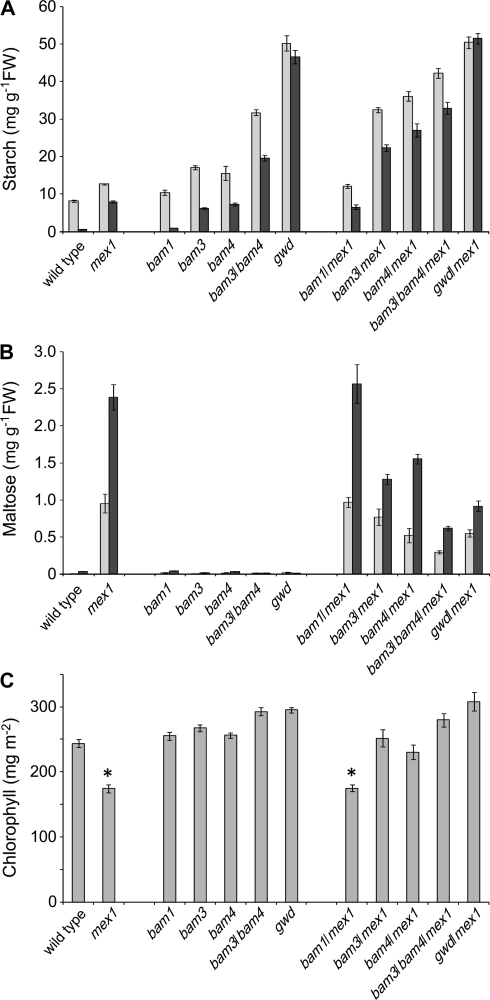Figure 3.
Modulation of Starch and Maltose Accumulation and of the Chlorotic Phenotype of mex1 by Introducing bam and gwd Mutations.
(A) Starch contents of the wild-type, and selected double or triple mutants in which enzymes of starch breakdown are missing in addition to MEX1. Plants were of the same developmental stage (20–43 d old, depending on the genotype, approximately 10-leaf stage) and were harvested at the end of the 12-h photoperiod (light bars) and at the end of the night (dark bars). Samples were extracted using perchloric acid (see Methods). Values are the mean ± SE of eight replicate samples, each comprising a single rosette.
(B) Maltose content of plants (as in (A)) harvested at the end of the 12-h photoperiod (light bars) and 4 h into the night (dark bars). Values are the mean ± SE of eight replicate samples, each comprising a single rosette.
(C) The chlorophyll content of mature leaves (leaf numbers 5–7 of 27–50-day-old plants, depending on the genotype) of the genotypes shown in (A). Chlorophyll was measured in acetone extracts and expressed on a leaf area basis. Each value is the mean ± SE of six replicate measurements on leaves from individual plants. Asterisks indicate lines carrying the mex1 mutation that differ significantly (student's t-test, p ≤ 0.5) in their chlorophyll content from the respective parental line (e.g. bam1/mex1 compared to bam1).

